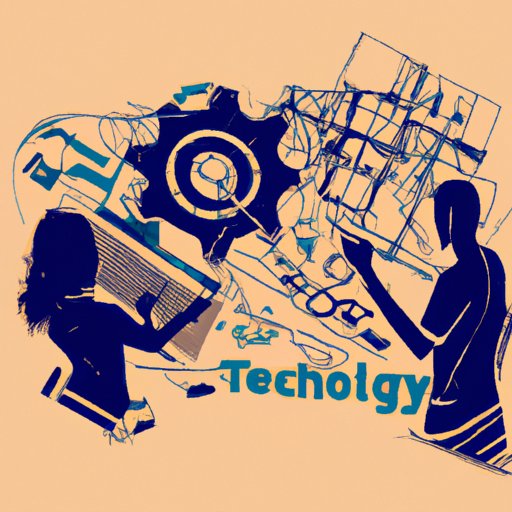Introduction
Design technology is a field of study that focuses on the application of engineering principles to create products or services. It involves the use of digital tools, software, and machines to design, develop, and manufacture goods. The aim of design technology is to improve the efficiency and performance of products while reducing costs and environmental impact.
The purpose of this article is to explore the role of design technology in modern society. We will examine its impact on businesses and industries, its benefits, and how it can be used in education. We will also provide a comprehensive guide to design technology for beginners and discuss the pros and cons of using this type of technology.
Overview of Design Technology
Design technology is a broad term that encompasses many different disciplines. It includes product design, engineering design, industrial design, graphic design, and architecture, among others. Design technology also includes computer-aided design (CAD), 3D printing, computer numerical control (CNC) machining, robotics, virtual reality, and more.
Design technology has been used for centuries, but it has become increasingly important in modern society due to the rise of digital technologies. Design technology is used to create products that are both aesthetically pleasing and functional. It is also used to streamline processes, reduce costs, increase productivity, and improve customer experiences.
According to a 2018 survey by Autodesk, “90% of manufacturers believe that design technology is critical to their success.” This demonstrates the importance of design technology in today’s business world.
Role of Design Technology in Modern Society
Design technology plays an important role in modern society. It has a significant impact on businesses and industries, as well as on education. Let’s take a closer look at each of these areas.
Impact on Businesses and Industries
Design technology has revolutionized the way businesses operate. It has enabled companies to design and manufacture products faster, cheaper, and with greater precision. This has allowed businesses to stay competitive in the market and produce higher quality products.
Design technology has also made it easier for businesses to collaborate with customers and other stakeholders. Companies can now work closely with customers to create products that meet their exact needs. This has resulted in better customer satisfaction and loyalty.
Impact on Education
Design technology has also had a major impact on education. Students are now able to learn about design technology in an interactive and engaging way. They can use virtual reality, 3D printing, and CAD software to create prototypes and test theories. This allows them to gain hands-on experience and develop real-world skills.
In addition, design technology has made it easier for students to access online resources and collaborate with peers. This has helped to improve the quality of education and give students the tools they need to succeed.

Comprehensive Guide to Design Technology for Beginners
If you’re new to design technology, here is a comprehensive guide to get you started. The first step is to familiarize yourself with the different types of technologies available. This includes CAD software, 3D printing, CNC machining, robotics, and virtual reality.
Once you understand the basics, you can start exploring specific projects. For example, you could design a prototype of a product, create a virtual environment, or program a robot. You can also use design technology to create graphics, animations, and other visual elements.
Finally, you should familiarize yourself with the tools and techniques used in design technology. This includes understanding how to use software such as CAD, 3D printing, and CNC machining. It also involves learning how to use digital fabrication tools, such as laser cutters and 3D printers.

Pros and Cons of Design Technology
Design technology has many advantages, but it also has some drawbacks. Let’s take a look at the pros and cons of using this type of technology.
Advantages
Design technology has numerous benefits. It enables businesses to create high-quality products faster and cheaper. It also makes it easier for companies to collaborate with customers and other stakeholders. Finally, it allows students to gain hands-on experience and develop real-world skills.
Disadvantages
Despite its advantages, there are some drawbacks to using design technology. It can be expensive to purchase the necessary hardware and software. It can also be difficult to master the tools and techniques used in design technology. Finally, it can be time-consuming to create complex projects.
Conclusion
Design technology is an important field of study that has revolutionized the way businesses operate and transformed education. It enables companies to create products faster and cheaper, and it allows students to gain hands-on experience and develop real-world skills. Despite its benefits, there are some drawbacks to using design technology, such as cost and complexity. However, with the right knowledge and tools, anyone can use design technology to create amazing products and services.
(Note: Is this article not meeting your expectations? Do you have knowledge or insights to share? Unlock new opportunities and expand your reach by joining our authors team. Click Registration to join us and share your expertise with our readers.)
